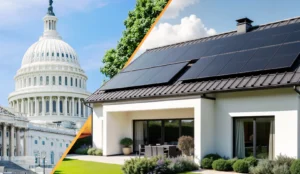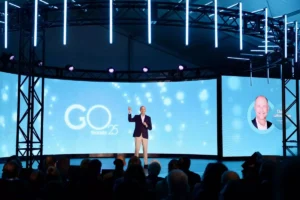Key Takeaways:
- U.S. data center energy consumption reached 176 TWh in 2023, making up 4.4% of total U.S. electricity usage, with projections between 325-580 TWh by 2028.
- AI-related energy demand is rising, with AI server consumption increasing from 2 TWh in 2017 to 40 TWh in 2023.
- Efficiency improvements in hyperscale data centers help offset some energy growth, but server and GPU advancements remain critical.
Data Center Energy Use is Growing
Data center energy consumption in the U.S. has surged from 76 TWh in 2018 to 176 TWh in 2023, representing 4.4% of total electricity use. Globally, energy use ranged between 240-340 TWh in 2022, excluding network activity (260-360 TWh) and cryptocurrency (100-150 TWh).
Despite significant improvements in efficiency, AI is driving a new wave of energy demand. The 2024 U.S. Data Center Energy Report estimates data center consumption could reach 325-580 TWh (6.7%-12% of U.S. electricity use) by 2028.
The Challenge of Measuring Energy Use
Estimates of data center energy usage vary significantly. A review of 258 studies from 2007 to 2021 found that only two research groups—Masanet and Borderstep—produce credible global models:
- 2010: 193 TWh
- 2018: 205 TWh
- 2021: 350-500 TWh
- 2022: 240-340 TWh
More Servers, Higher Power Draw
Server efficiency has improved, but energy consumption is increasing. Between 2007-2023, the average single-socket server drew 118W, while dual-socket servers averaged 365W. Recent data shows dual-socket servers now consuming 600-750W.
The number of servers is also growing, from 14 million in 2014 to 21 million in 2020, with AI-related servers accounting for 1.6 million. By 2028, 7.7 million new servers are expected to be shipped.
Change the World - Subscribe Now
Network Energy Usage Trends
While total network energy consumption reached 260-360 TWh in 2022, it is driven by the number of ports on network devices rather than data usage. This distinction is often misunderstood in academic research and media reports.
Hyperscale Data Centers Improve Efficiency
The average Power Usage Effectiveness (PUE) dropped from 2.5 in 2007 to 1.58 in 2023, largely due to hyperscale data centers. Today, 74% of servers are in hyperscale or colocation facilities. Google leads with a 1.08 PUE in some U.S. facilities, with Singapore sites at 1.19 PUE.
AI’s Role in the Energy Surge
Despite fears of an unsustainable energy surge, past projections have been exaggerated. A 2015 report predicted 1,200 TWh of data center consumption by 2020, which did not materialize.
However, AI-related energy demand is real, rising from 2 TWh in 2017 to 40 TWh in 2023. More efficient AI training models like DeepSeek-V3 are reducing costs, but overall consumption is still increasing. With servers and GPUs driving most of the rise in energy use, efficiency improvements must focus on hardware advancements.
The Road Ahead
With network and storage energy consumption stabilizing, the next efficiency gains must come from server and GPU optimizations. The industry must balance AI expansion with sustainability, ensuring that innovation does not lead to an unsustainable power crisis.












